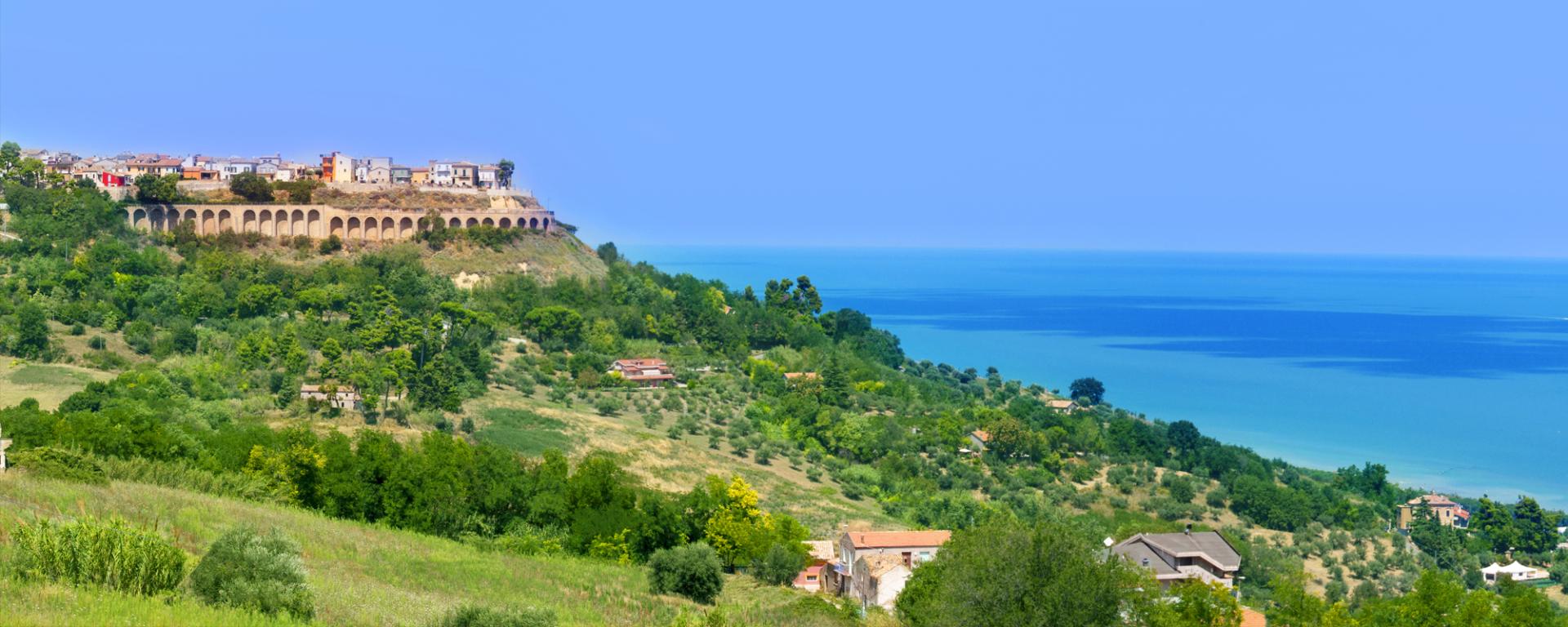
Church of Santissimo Salvatore
The Church of the Santissimo Salvatore is the oldest in the town and is located in the heart of the historic centre of Silvi Paese. The building is a unique example of Romanesque architecture, dating back to the 11th century.
The facade of the church is asymmetrical and his made of bricks and brick facings. The bell tower is located on the left corner of the facade and has a simple and imposing architecture.
The building overlooks the Largo della Porta, where the rear facade joins the rectory and the ancient arch of the southern ring road.
Today's entrance to the church is placed laterally on the western facade, while originally the main facade was located on the northern side. The ancient decoration of the fourteenth-century portal is still visible, sculpted according to the canons of the so-called "Atrian school". Among the details there are two sculpted faces, one male and one female: they have remains of polychrome traces, evidence of the fact that the stone portals of the time were entirely painted.
The interior of the church has a single nave, divided into four bays. The two water stoups in stone placed at the entrance are very elegant, made from reused material from religious buildings built in the area.
Of particular interest is a fragment of a fresco placed on the right wall of the altar: it represents the face of a young high-ranking woman. According to art historians, the painting dates back to the last thirty years of the thirteenth century and is defined as an example of Swabian-Frederick monumental painting".
According to the most accredited hypotheses, the young noblewoman is Saint Catherine of Alexandria, among the few to be portrayed in traditional iconography with regal elements such as the crown. Furthermore, among the elegant drapery it is possible to see some details of the cogwheel, the torture with which Catherine was martyred. The young woman is holding a white lily, a symbol that could be a reference to the House of Angiò, a French dynasty that succeeded the Swabians in the dominion of southern Italy in 1268, the probable reference period of the work.
The subject is painted with different parameters from the local late Romanesque iconographic tradition and many elements of European Gothic art are present in it
The fresco "L’incontro dei tre vivi e dei tre morti”, preserved in the majestic cathedral of Atri, belongs to the same historical-cultural context.
The altarpiece is embellished with a splendid eighteenth-century canvas representing "The institution of the Eucharist". It is interesting to note that in the foreground the canvas depicts Saint Nicholas, the protector of sailors. Recognizable for the sacred vestments and for the three children in the tub, which will save from death according to the hagiographic story, this iconographic detail according to some hypotheses could be a reference to the presence of a small chapel dedicated to San Nicola, built in the XIII century in the area of the “Castelluccio”, a settlement built at the mouth of the Cerrano and subsequently developed around the port.
The wooden bust of San Leone, patron saint of the city of Silvi, is extremely refined.
Of eighteenth-century Neapolitan artistic craftsmanship , it depicts the Saint with a golden palm in one hand and the city of Silvi in the other, which he lovingly embraces on his heart.
The floor of the church consists of coloured tiles in a cream and brown duotone pattern. The Church of the Santissimo Salvatore is a suggestive place of worship that deserves to be visited to admire its history and its architectural beauty.
Over the centuries, the church has undergone numerous renovations and expansions, including the addition of the bell tower in the 18th century and the renovation that took place in the early 20th century.
Watch the video about the church of Santissimo Salvatore

 IT
IT